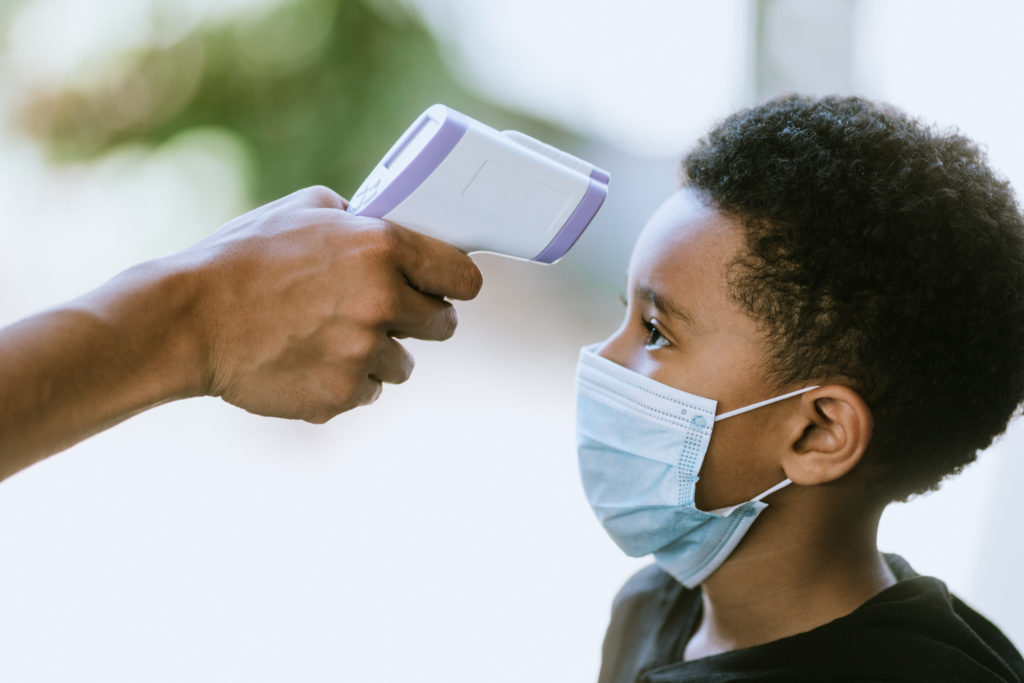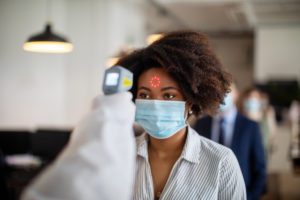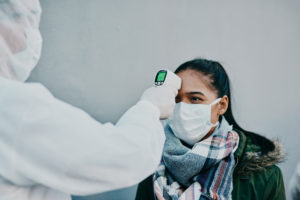
We are living in strange times. This pandemic has brought a new set of "normals" like social distancing, curbside pickup, virtual everything and taking your temperature in order to get in some places.
The temperature taking has quickly become the barometer on whether a person has or doesn't have symptoms of COVID. But the fact that many people use a temperature gun (an infrared thermometer shaped like a gun that is pointed at your forehead), is a little troubling to me.
I don't know about you, but pointing a gun-like device to my head that determines if I can enter or patronize an establishment bothers me. It could be that I'm a Black man in America and I've seen my fair share of guns pointed at me in a threatening manner. Or it could be the way people point the gun at me in fear that I do have the virus. I don't know.

What I do know is that there has been a lot of debate over the infrared thermometer guns pointed at one’s forehead to check the temperature. Some experts say that it is better to point it at the wrist instead of the forehead. City doctors clear some of the myths regarding infrared thermal-checking scanners.
“Checking the temperature of the wrist is more accurate because the wrist has a more stable temperature than the forehead. The accuracy of the temperature of the forehead depends on many factors: the distance from the skin, the time the sensor is held, the sweat on the skin or makeup or even circulatory problems. Such factors are unlikely to impact the temperature on your wrist and the surface area required for measurement is less than what is required for the forehead,” said Dr. Suresh KG, an internal medicine doctor.

“Mostly in larger populations," continues Dr. Suresh. "Forehead or wrist checks are done to make the process faster when there is a larger queue. Sometimes due to the environmental temperature conditions, the readings may vary from the forehead to the wrist. Usually, in cold temperature, if a person is wearing full armed sleeves and is measured from 5 to 10 cm above the wrist, it gives a more accurate reading than in the forehead. But again, if the person has just ridden a bike, the wrist temperature might be lower than the body heat."
Dr Murali Mohan, a neurosurgeon said, “The human eye is sensitive to all radiation, including infrared radiation. Infrared radiation raises the internal temperature of the eye, virtually cooking it. Prolonged IR exposure can lead to cataracts, corneal ulcers, and retinal burns. Moreover, taking the hand close to a person’s head to check the temperature allows for a chance of fomite transmission or air-borne transmission of virus.”
But what about the mental aspect of it?
Is there something to be said about someone repeatedly pointing a gun-shaped device at me?
According to online magazine Quartz, the violence that is implied in the sheer nature of the product descriptions doesn’t help the cause of temperature guns. “Simply hold the IR gun, press the trigger and aim the laser guide at the target,” one of them reads.
Designers of products like these have an opportunity to change things here—especially now since temperature guns are becoming standard equipment for tackling Covid-19 and future pandemics. Designers have proven how a bit of imagination and empathy—or “design thinking”—can help humanize ominous medical technologies. A classic example is GE’s line of kid-friendly CT scanners made to look like a pirate ship.
In a similar vein, a dog-shaped thermometer photographed in a factory in Hubei might serve as inspiration.
Cognitive psychologist Amy Schwartz shares her thoughts on the necessity of thinking about the emotional resonance of devices. “Aesthetic considerations may seem minor when considering the important medical functions performed by these devices, but these concerns are not small to users,” she writes in an op-ed for the trade journal Med Device. “Ultimately, humanizing medical devices is a path towards better adherence and patient health.”








